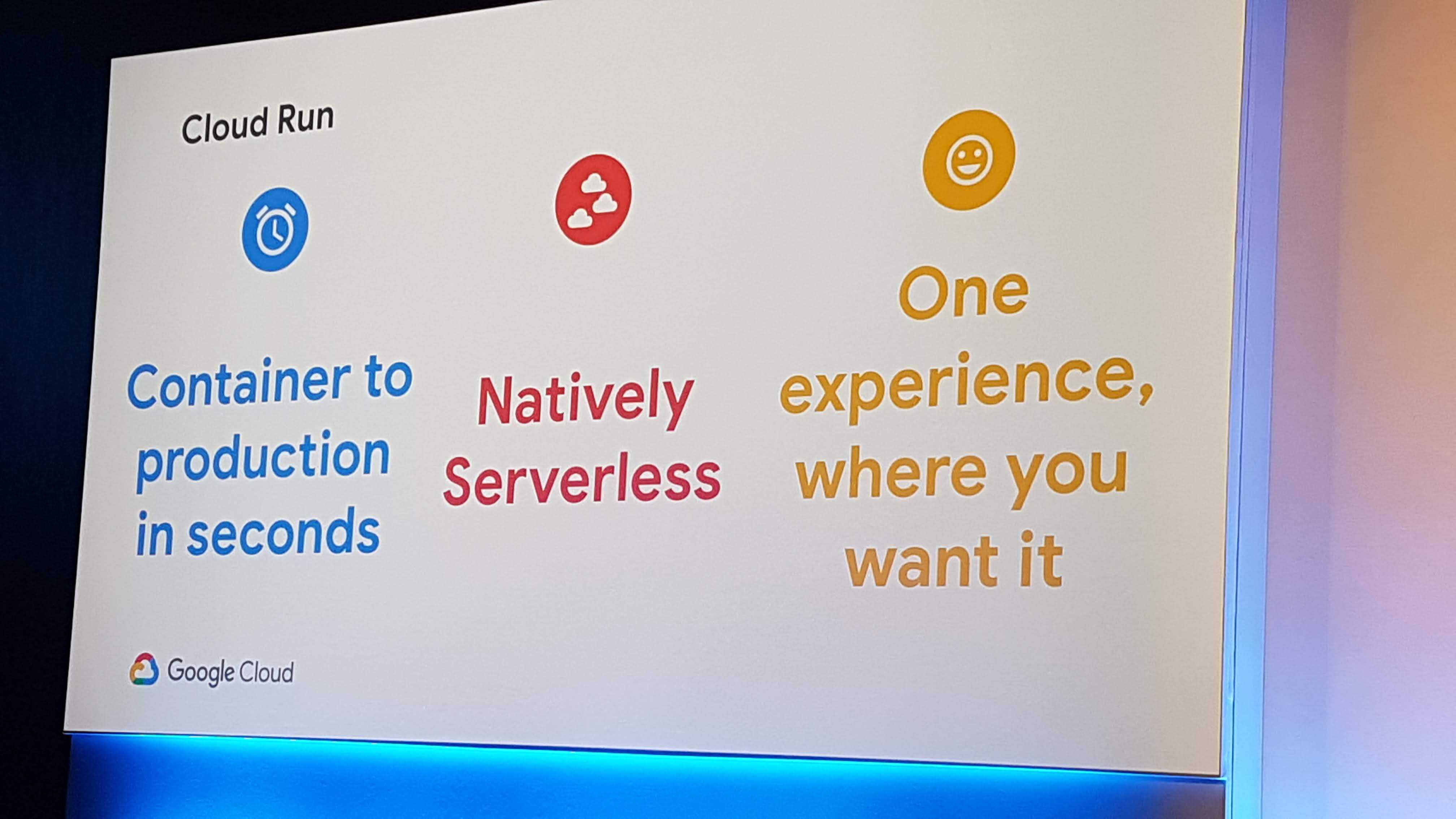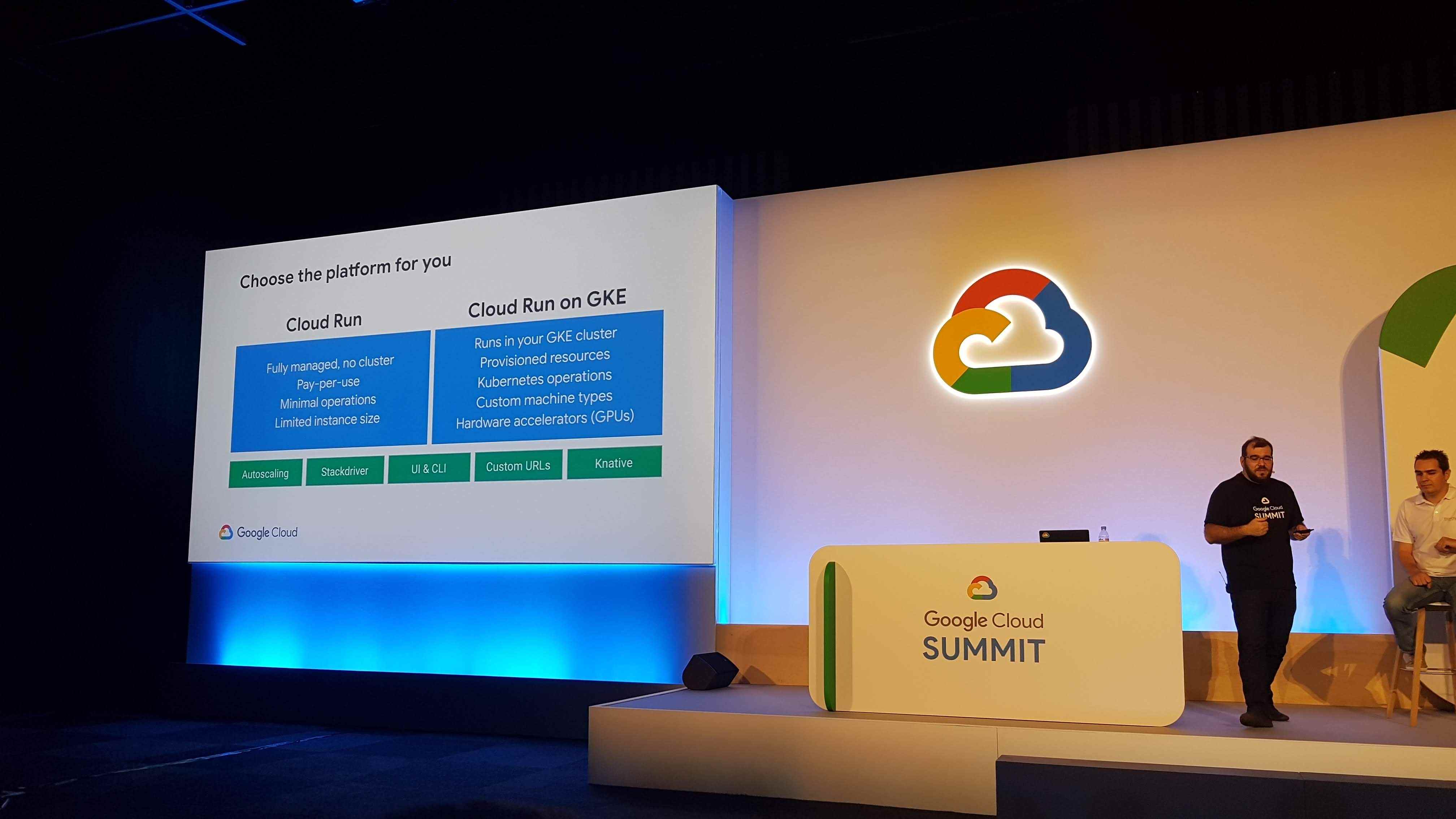All Cloud Providers have vowed -to different extents- to enable multi-cloud, but Google Cloud claimed during its Parisian Summit to be “the only multi-cloud provider in the market”. After this bold statement by Google Cloud’s CEO, Thomas Kurian, it was the Technical Director, Financial Services’ turn to strongly engage the French audience to accept “no trade-offs” when it comes to infrastructure modernization.
One of the new solutions presented that is meant to do so is Cloud Run; it allows to bring serverless to containers. There was indeed a lot of buzz about both at GCS, but let’s go beyond the buzzwords and look at some use cases!

Facilitate infrastructure optimization
Serverless has been offered by GCP for quite a while now. This approach allows to run code within the cloud code, offering automatic scaling, high availability and fault tolerance. However, serverless is not always the best and only option when it comes to multi-cloud or hybrid cloud architectures because:
- You’ll probably need to customize your applications for each Cloud Provider
- You might also end up with unexpected additional operational costs
- If you decide to change CSP, you’ll certainly need to recode your serverless application.
Now, containerization is another way of deploying applications with some elasticity and resilience options depending on the case / Cloud Provider. A containerized application can be deployed on any properly configured host. Not only does it simplify testing and facilitate infrastructure optimization, but it also offers cost and performance predictability. Containers however might involve a significant higher cost of operations.
With Cloud Run, Google Cloud promises to make it easier to deploy applications into GKE, other cloud service providers and even dedicated infrastructures… A best of both worlds option when it comes to serverless and containerization!
Flexibility and portability
Veolia’s testimonial during its “Build serverless applications with flexibility and portability” session confirmed that choosing between serverless and containerization will depend on the use case and the level of hybridization of the environment. In the water management leader’s case, some components of cloud-native apps require the elasticity offered by containers while legacy apps - such as remote water metering that stay on-premises - don’t need it.

What would perfectly fit in this hybrid and multi-cloud picture is a solution that would bring the same level of agility to the network. As a new recruit with InterCloud, I find it fascinating that software-defined connectivity allows to seamlessly interconnect any resource whether it’s on-premises or in the Cloud and whatever the Cloud Provider. I feel that offering “portability and flexibility” in cloud networking is what companies need to avoid network provider lock-in as well as allow for network strategy innovation.